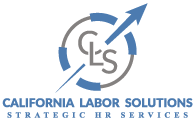The COVID-19 pandemic continues to spread, and as part of efforts to control it, the California governor signed Assembly Bill 685 (“AB 685”), which expands Cal/OSHA’s authority with respect to workplace COVID-19 cases and imposes new COVID-19 reporting requirements on ALL California employers (both private and public sector employers) starting January 1, 2021. This law shall remain in effect for two years (through December 31, 2023).
For purposes of AB 685, any person who has any of the following is a “qualifying individual”: when has a laboratory-confirmed case of COVID-19, a positive COVID-19 diagnosis from a licensed health care provider, a COVID-19-related order to isolate provided by a public health official, or died due to COVID-19.
Expanded Cal/OSHA Authority
AB 685 expands Cal/OSHA’s authority by authorizing Cal/OSHA to act when, “in its opinion,” employees are exposed to a risk of a COVID-19 infection in such a way that it creates an imminent hazard to the employee by taking one or more of the following actions:
– Prohibiting entry or access to a worksite;
– Prohibiting performance of an operation or process at the worksite; or
– Requiring posting of an imminent hazard notice at the worksite.
In addition, under AB 685, Cal/OSHA is permitted to issue a citation alleging a serious violation relating to COVID-19 without providing the employer with the 15-day advanced notice and opportunity to rebut the violation that is generally required before a citation alleging a serious violation can be issued. This exemption will be repealed on January 1, 2023.
What is “notice of potential exposure” for purposes of AB 685?
An employer is considered to have “notice of potential exposure” to COVID-19 at a worksite when any of the following occur:
– The employer or representative of the employer receives notice from a public health official or licensed medical provider that an employee was exposed to a qualifying individual at the worksite.
– The employer or representative of the employer receives notice from an employee, or their emergency contact, that the employee is a qualifying individual.
– The employer or representative of the employer receives notice through the testing protocol of the employer that the employee is a qualifying individual.
– The employer or representative of the employer receives notice from a subcontracted employer that a qualifying individual was on the worksite of the employer receiving notification.
New Notification/Reporting Requirements
AB 685 also requires California employers to take the following actions within one business day of receiving a “notice of potential exposure” to COVID-19:
– Provide a written notice to all employees, and the employers of any subcontracted employees, who were on the premises at the same “worksite” as the “qualifying individual” within the infectious period (14 days) that they may have been exposed to COVID-19 in a manner the employer normally uses to communicate employment-related information.
– Provide a written notice to the exclusive representative (i.e. bargaining units/union representative), if any, of employees described above.
– Provide all employees who may have been exposed and the exclusive representative, if any, with information regarding COVID-19-related benefits to which the employee may be entitled under applicable federal, state, or local laws including, but not limited to, workers’ compensation, and options for exposed employees, including COVID-19-related leave, company sick leave, state-mandated leave, supplemental sick leave, or negotiated leave provisions, as well as antiretaliation and antidiscrimination protections of the employee.
– Notify all employees, and the employers of subcontracted employees and the exclusive representative, if any, on the disinfection and safety plan that the employer plans to implement and complete per the guidelines of the federal Centers for Disease Control.
In addition, employers are also required to notify their local public health department of COVID-19 if a COVID-19 outbreak (as currently defined by the California State Department of Public Health) occurs at a worksite. This notice must be provided within 48 hours of the employer learning of the outbreak and must contain the following information:
– the number of COVID-19 cases at the worksite
– the names and occupations of the qualifying individuals
– the address of the worksite, and
– any other pertinent information.
Once an outbreak at a worksite is reported, the employer is required to continue to notify the local health department of any subsequent laboratory-confirmed cases of COVID-19 at the worksite.
Employers are prohibited from retaliating against a worker for disclosing a positive COVID-19 test, diagnosis, or order to quarantine or isolate.
Finally, the employer must maintain records of the written notifications required for a period of at least three years.
How should notice of potential exposure be provided?
Employers are required to provide the notice in a manner the employer normally uses to communicate employment-related information provided that the notice can be reasonably be anticipated to be received by the employee within one business day. This can include the following:
– Hand-delivering the notice to each employee at the worksite;
– Sending the notice to employees via email; and
– Sending the notice to employees via text message.
– Finally, the notice must be in both English and the language understood by the majority of the employees.
What information should be included in the notice?
The notice must contain the following elements:
– A statement advising employees that they may have been exposed to COVID-19 at the workplace (without identifying the sick employee)
– Information regarding COVID-19-related benefits to which the employee may be entitled under applicable federal, state, or local laws including, but not limited to, workers’ compensation and COVID-19-related leave;
– Information regarding options for exposed employees, including company sick leave, other federal or state-mandated leave, supplemental sick leave, or negotiated leave provisions.
– Information regarding the antiretaliation and antidiscrimination protections of the employee.
– Information regarding the disinfection and safety plan that the employer plans to implement and complete per the guidelines of the CDC.
Remember, this notice must be provided not only to the affected employees, but also to:
– The union representative (if any of the affected employees are part of a bargaining unit); and
– The owner of any company with whom the employer subcontracts (if any of the affected employees are employed by a subcontractor).
What is a “worksite” for purposes of AB 685?
The term worksite is limited only to the building, store, facility, agricultural field, or other location that the “qualified individual” entered during the infectious period (14 days). In that case, only employees in those buildings that the “qualified individual” entered would require notice and not employees in the entire company.
Is there a requirement to notify the general public?
The statute does not require an employer to notify members of the general public (who happened to be at the worksite during the infectious period) of the potential exposure to COVID. While not required, it is recommended that employers consider notifying any identifiable third parties who were at the worksite during the infectious period.
Please note that during this time of crisis, the updates, advisories and regulations that we receive from the promulgating agency often contain ambiguities and/or are often amended, modified or updated. The statements/opinions expressed herein is not legal advice. The opinions expressed herein are based on our reasonable interpretation of the issuing agency’s publication at the time the opinion is expressed and is therefore subject to change based on further developments. The effect of the opinions expressed may be different based on your particular circumstances, and it is recommended that you not rely upon these general opinions prior to obtaining a consultation with your legal and/or financial advisors.

